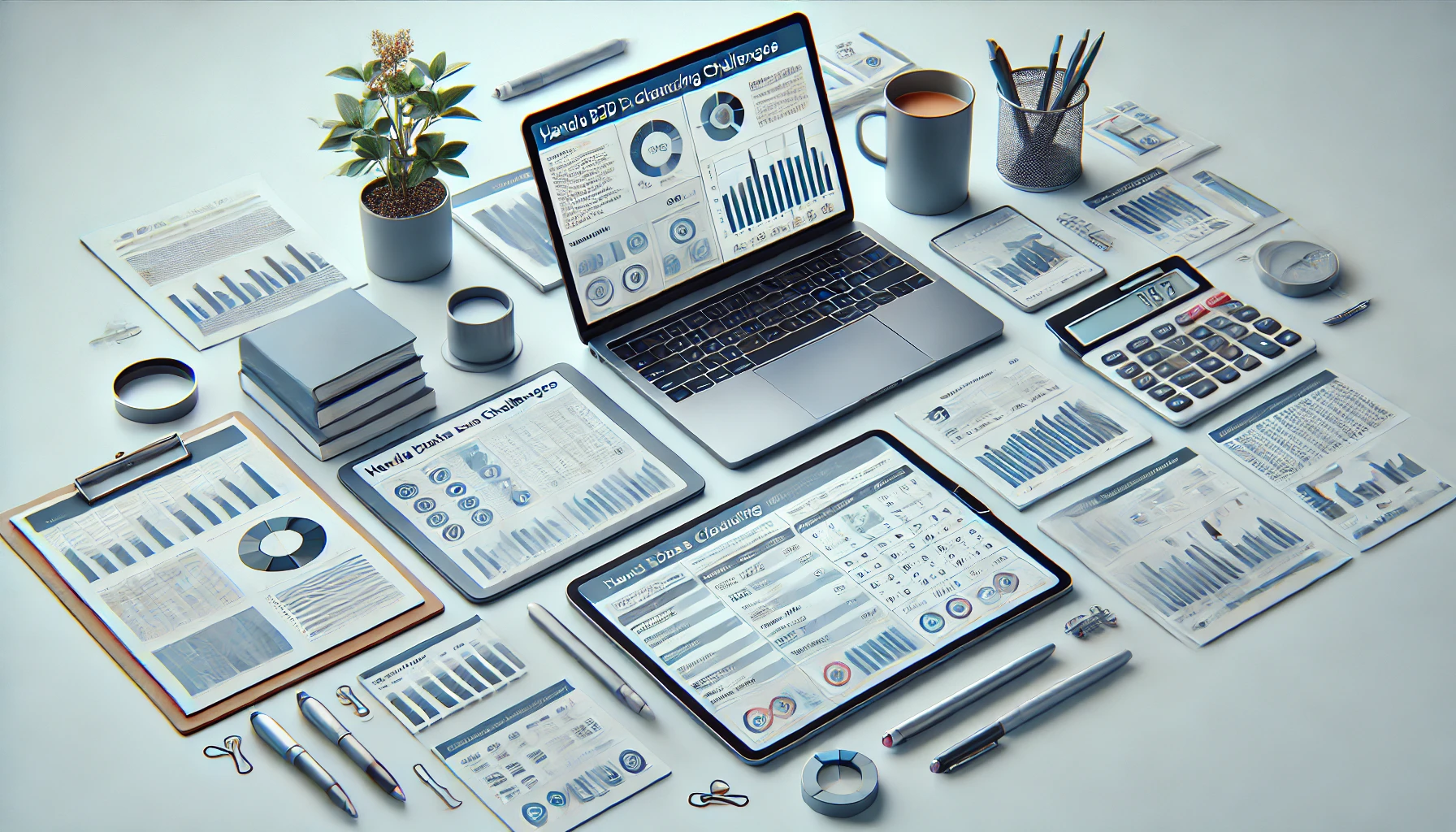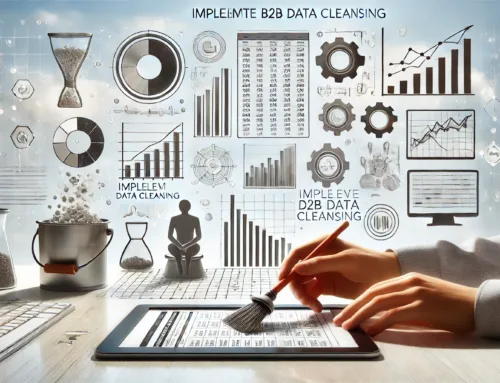To handle B2B data cleansing challenges, you encounter a maze of complexities that demand attention. Ensuring your data is up to par goes beyond mere surface-level cleaning; it requires a meticulous strategy. Picture this: intricate webs of interconnected information, each thread needing to be meticulously untangled for your business to thrive. But fear not, for within these challenges lie hidden opportunities. Stay tuned to discover the secrets that can transform your data cleansing dilemmas into triumphs in the corporate world.
Identify Potential Issues
When embarking on the task of B2B data cleansing, the initial step is to identify potential issues that may be hindering the accuracy and quality of your data. Data quality is paramount in ensuring that your business decisions are based on reliable information. Begin by conducting a comprehensive data validation process to uncover any inaccuracies, inconsistencies, or duplications within your dataset.
Examine the completeness of your data entries to ensure that all necessary fields are filled accurately. Validate the correctness of information by cross-referencing it with credible sources or utilizing automated validation tools. Look for any outdated records that could compromise the integrity of your database. Identifying these potential issues early on will lay a solid foundation for effective data cleansing strategies.
Plan for Contingencies
To ensure a smooth and effective B2B data cleansing process, it is imperative to anticipate and plan for contingencies that may arise during the course of your data validation efforts. Implementing strategies to address potential obstacles proactively can help minimize disruptions and ensure the overall success of your data cleansing project.
One key strategy is to establish clear communication channels among team members involved in the data cleansing process. By fostering open communication, you can quickly address any issues that arise and collaborate effectively to find solutions. Additionally, creating a detailed timeline with built-in buffers for unexpected delays can help you stay on track even if challenges emerge.
Another important contingency plan is to have backup sources for critical data points. In case certain data sets are incomplete or inaccurate, having alternative sources to verify information can prevent bottlenecks in the cleansing process.
Employ Advanced Tools
Employing advanced tools is a crucial aspect of optimizing the B2B data cleansing process. When it comes to data enrichment, advanced tools can help you enhance existing data with additional valuable information. These tools can automatically append missing data fields, such as company size or industry, providing a more comprehensive dataset for analysis. Additionally, they can standardize formats, clean up inconsistencies, and eliminate duplicates, ensuring a higher quality database.
Data validation is another critical component where advanced tools shine. These tools utilize algorithms to check data accuracy and integrity, flagging any discrepancies or errors for further review. By automating the validation process, you can significantly reduce manual effort and enhance the efficiency of your data cleansing activities.
Investing in advanced tools for data enrichment and validation not only streamlines the cleansing process but also improves the overall quality of your B2B data. By leveraging these tools effectively, you can ensure that your database is up-to-date, accurate, and reliable for making informed business decisions.
Maintain Data Accuracy
To ensure the effectiveness of your B2B data cleansing efforts, maintaining data accuracy is paramount. Data validation is a crucial aspect of this process. Implement automated tools to perform frequent checks on the accuracy and completeness of your data. This will help identify any inconsistencies or errors that may have crept in over time. Regular data validation ensures that your database remains reliable and up-to-date.
In addition to data validation, consider data enrichment as a strategy to maintain accuracy. Data enrichment involves enhancing your existing database with additional information from external reputable sources. By enriching your data, you can fill in any gaps, update outdated records, and ensure that you have the most comprehensive and accurate information available.
Monitor Data Consistency
Data consistency is a fundamental pillar of effective data management within the realm of B2B operations. To ensure that your B2B data remains consistent and reliable, it is crucial to actively monitor and address any inconsistencies that may arise. Here are some key strategies to help you maintain data consistency:
- Implement Automated Data Validation Processes: Set up automated checks to validate the accuracy and completeness of your B2B data on a regular basis.
- Establish Data Quality Metrics: Define specific metrics to measure data consistency and identify deviations that may indicate errors.
- Regular Error Detection Audits: Conduct routine audits to detect errors, inconsistencies, and duplicates in your B2B data sets.
- Utilize Data Profiling Tools: Make use of data profiling tools to analyze the quality and consistency of your data, helping you to identify and rectify any anomalies promptly.
Secure Data Privacy
Ensuring the privacy of your B2B data is a critical aspect of maintaining trust and compliance within your organization. Data encryption plays a vital role in safeguarding sensitive information from unauthorized access. By encrypting your data, you add an extra layer of security, making it significantly harder for cyber threats to compromise your valuable business data. Implementing robust encryption protocols across all data touchpoints, including storage and transmission, minimizes the risk of potential breaches.
Regular compliance audits are essential to ensure that your data privacy measures align with industry regulations and standards. Conducting thorough audits helps identify any gaps or vulnerabilities in your data security practices, allowing you to address them promptly. By staying up to date with compliance requirements, you not only protect your company from legal repercussions but also build a reputation as a trustworthy business partner.
Update Records Regularly
Regularly updating your records is a fundamental practice that ensures the accuracy and relevance of your B2B data. By keeping your data current, you enhance the efficiency of your marketing campaigns, improve customer relationships, and make better strategic decisions. To streamline this process, consider the following:
- Automation Benefits: Implement automated tools to schedule regular updates and reduce manual errors.
- Data Validation Techniques: Utilize validation checks to ensure the integrity of the updated information.
- Regular Audits: Conduct periodic audits to identify outdated records and rectify inaccuracies promptly.
- Customer Feedback Integration: Incorporate feedback mechanisms to capture changes in customer details and preferences.
Frequently Asked Questions
How Can I Prevent Data Duplication Across Different Systems?
To prevent duplicates across systems, ensure data integration strategies align. Use unique identifiers, establish data governance protocols, and implement regular audits. Streamline processes with automated tools and enforce strict entry guidelines. Regularly monitor for redundancies.
What Are the Best Practices for Handling Incomplete Data Entries?
When dealing with incomplete data entries, utilize data validation techniques to ensure accuracy. Implement address standardization methods for consistency. By combining these practices, you can enhance the quality and reliability of your data records effectively.
Is There a Way to Automate the Data Cleansing Process?
Yes, there is a way to automate data cleansing processes. By integrating data enrichment techniques and leveraging machine learning algorithms, you can streamline and enhance the accuracy of your data cleansing efforts, ensuring more efficient and effective results.
How Can I Ensure Data Quality When Dealing With Legacy Systems?
Ensuring data quality with legacy system integration involves implementing robust data validation techniques. By validating data at different touchpoints and utilizing automation tools, you can enhance accuracy and reliability in your data management processes.
What Steps Should Be Taken to Manage Data Quality in Real-Time?
To manage data quality in real-time, you must prioritize data validation and monitoring. Implement systems for real-time updates and integration to ensure accurate and up-to-date information. Regularly review and refine processes to maintain data integrity.




